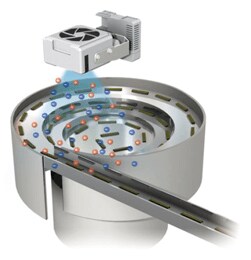Problems during Transfer
Have you experienced any problems during transfer processes, such as incorrect roll feeding or sheet material misalignment?
Problems during transfer processes can vary, including inconsistent pass-over timing, friction or suction on object surfaces, chemical affinity, magnetic force, and static buildup. Static electricity is a common cause of problems during transfer at manufacturing sites.
This section explains how problems during transfer occur due to static electricity and possible solutions for these problems.
How problems during transfer occur
Problems during transfer are caused by Coulomb forces. Coulomb force is a force of attraction between positive and negative charges and a force of repulsion between charges of the same polarity. The problems that occur differ according to which direction the force is working.
Problems caused by Coulomb force attraction
In a roll transfer process as shown in the picture to the right, Coulomb force attraction can cause problems.
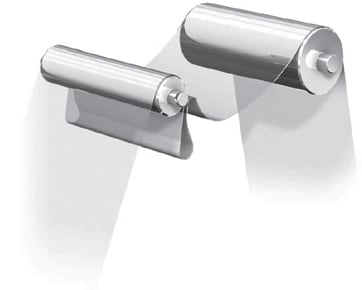
How the sheet moves on the rollers is described below.
The static buildup on the sheet creates Coulomb force attraction between the roller and the sheet. The attractive Coulomb force causes the sheet, which is supposed to flow in the forward direction, to instead cling to the roller and be wound up.
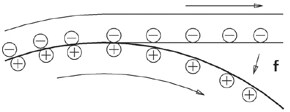
Problems caused by Coulomb force repulsion
The problem in transferring parts on a parts feeder is caused by Coulomb force of repulsion.
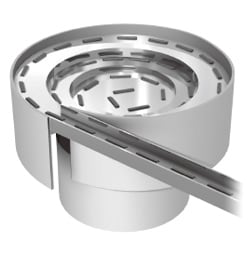
If the parts are charged with the same polarity as the rail surface, a repulsive Coulomb force works on the parts and the rail. The repulsive force between the parts and the rail lifts the parts. A parts feeder conveys parts by vibrating this rail and vibrations cannot be conveyed to lifted parts, so they cannot be transported correctly.

Measures for problems during transfer
Problems like these can be solved by making the attractive or repulsive Coulomb force disappear, which means to remove static charge.
To eliminate static, grounding is effective for conductors while conductivity treatment (changing insulators into a state that passes electricity more easily), humidity control, and static eliminators are particularly effective for insulators.
Generally speaking, this problem occurs in locations where a large electrostatic charge is present, so it is effective to use a static eliminator (ionizer) targeted at those locations. Static eliminators (ionizers) are also useful because they can handle static elimination for both conductor and insulator targets.
Measures for problems caused by Coulomb force attraction
When a sheet is sticking to a roller, an ionizer should be aimed at the point where the sheet leaves the roller.
By aiming at the locations where friction is present, it can effectively eliminate the Coulomb force between the sheet and roller.
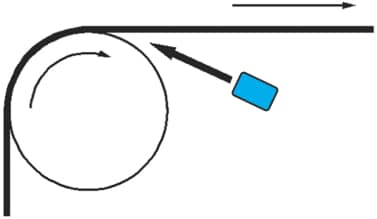
Attractive Coulomb force can also cause problems during transfer in processes that feed the same material, like film rolling. Where the rolled film is pulled out, it picks up charge when separating from the roll even when they are the same material. As the transfer progresses, the amount of electrostatic charge can build up to a dangerous level, so a static eliminator (ionizer) is used at the point where the sheet separates from the roll.
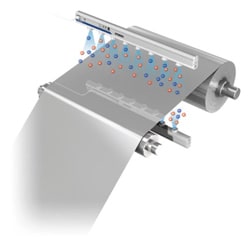
Measures for problems caused by Coulomb force repulsion
When parts from a part feeder lift up and do not flow well on the conveyor, an ionizer should be aimed at a point between the rail and parts for static elimination. This removes the Coulomb force and the repulsion, ensuring that the parts stay in contact with the rail for appropriate transfer.
